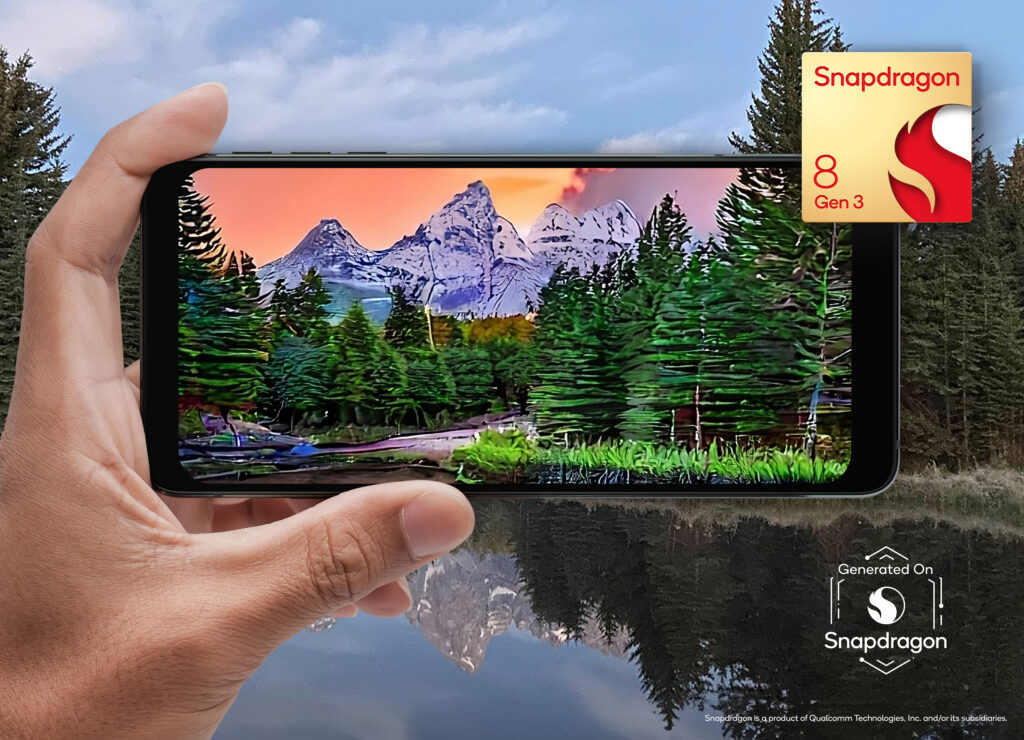Qualcomm’s launch of the Snapdragon 8 Gen 2 a while back proved to be a game-changer – suddenly, the chip manufacturer was on top of the food chain, thanks to a smartly-designed mobile SoC that offered considerable performance in addition to power efficiency. As a result, the Snapdragon 8 Gen 2 was a hit among enthusiasts, making its presence known in flagship phones from Samsung, OnePlus, and more.
With that in mind, we’ve finally witnessed the launch of this year’s flagship Snapdragon mobile SoC, the 8 Gen 3. As expected, Qualcomm boasts some considerable improvements over the 8 Gen 2, which itself seems hard to top. Chris Patrick, Senior Vice President and General Manager of Mobile Handsets at Qualcomm states:
“Snapdragon 8 Gen 3 infuses high-performance AI across the entire system to deliver premium-level performance and extraordinary experiences to consumers. This platform unlocks a new era of generative AI enabling users to generate unique content, help with productivity, and other breakthrough use cases. Each year, we set out to design leading features and technologies that will power our latest Snapdragon 8-series mobile platform and the next generation of flagship Android devices. The Snapdragon 8 Gen 3 delivers.”
A Focus on AI

In addition to performance improvements, Qualcomm has also spent considerable R&D into the 8 Gen 3’s AI capabilities. The rising popularity of incorporating AI features into mobile hardware is something that a lot of device manufacturers have been working on, and Qualcomm has taken steps to make sure that it doesn’t fall behind. The Snapdragon 8 Gen 3 packs Qualcomm’s AI Engine which allows for on-device generative AI, which is able to create content and responses based on text, voice, and image inputs.
This also means that devices will be able to support large language models (LLM), language vision models (LVM), and transformer network-based automatic speech recognition (ASR), which is all done on-device. The same goes for stable diffusion, which Qualcomm says is capably handled on the chip itself.
Imaging Capabilities

This focus on AI extends to the chip’s photographic capabilities, thanks to AI-powered camera features. Qualcomm has also included Cognitive ISP, paving the way for AI voice-activated photo and video editing for content production and editing, in addition to real-time shot optimization via Semantic Segmentation, which supports up to 12 layers including elements such as detail, vibrancy, and more. There’s even an Object Eraser function that works on videos (which should give Google a run for its money).
Other camera features supported by the 8 Gen 3 include dual “always-sensing” cameras in the front and back allow for easy QR code detection and face unlock, Dolby HDR photo technology, and Vlogger’s View which gives real-time access to both the front and rear cameras for social media posting and more.
Gaming and Performance

The Snapdragon 8 Gen 3 also comes with support for Snapdragon Elite features, such as hardware-accelerated ray tracing with Unreal Engine 5.2, and support for up to 240 FPS and 240 Hz displays. Users can also link their device to support external displays with 8K resolution upscaling via Snapdragon Game Super Resolution, and Adreno Frame Motion Engine 2.0 for higher quality visuals during gaming sessions.
Qualcomm says that the chip’s Kryo CPU offers up to 30% better performance and 20% power efficiency over last year’s Snapdragon 8 Gen 2, which to be honest is saying a lot given how impressive the 8 Gen 2 was when it came to sustaining performance in high-intensity tasks and even daily usage.
An Overall Package
With that being said, Qualcomm has clearly designed the 8 Gen 3 to be an all-in-one performer – in addition to AI, performance and photography, the chip also comes with support for lossless audio via Qualcomm’s Expanded Personal AreaNetwork Technology (XPAN), an AI-accelerated 5G modem, as well as support for Wifi 7 connectivity.
In terms of availability, we can expect the Snapdragon 8 Gen 3 to arrive in the upcoming months and weeks on devices from several partner manufacturers including ASUS, Honor, iQOO, MEIZU, NIO, Nubia, OnePlus, OPPO, realme, Redmi, RedMagic, Sony, vivo, Xiaomi, and ZTE.



5 Comments
Pingback: Qualcomm’s New Snapdragon X Elite could Give AMD and Intel a Run for their Money
Pingback: OPPO’s Getting Ready to Launch its 8 Gen 3-powered Phone
Pingback: Meet the Xiaomi’s New Flagship Champs: The Xiaomi 14 and 14 Pro
Pingback: Here’s a Look at the Upcoming OnePlus 12
Pingback: Samsung Boasts Performance and AI Capabilities with its New Galaxy S24 Series